Somalia Flag Meaning
A light blue field with a white five-pointed star in the center, representing the United Nations that helped Somalia achieve independence, the sky and Indian Ocean surrounding the Horn of Africa, and the five historical regions of Greater Somalia united under one symbol.
- Continent
- Africa
- Adopted
- 2012
- Ratio
- 2:3
- Colors
- light blue, white
- Designer
- Mohammed Awale Liban
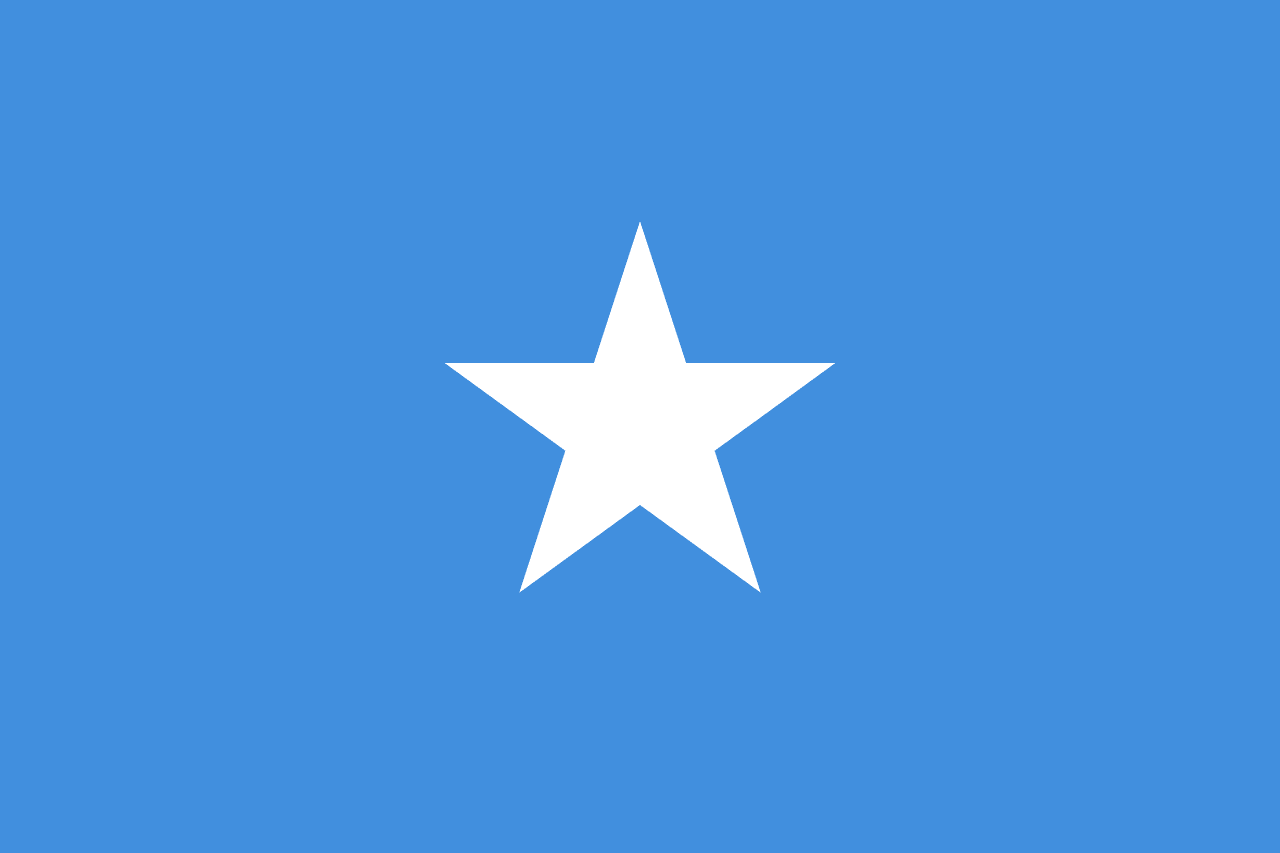
Symbolism
Light Blue Field: Represents the United Nations flag and the organization's role in helping Somalia achieve independence from colonial rule, as well as the blue waters of the Indian Ocean and Gulf of Aden that surround the Somali peninsula.
White Five-Pointed Star: Represents the five historical regions of Greater Somalia: Italian Somaliland, British Somaliland, French Somaliland (Djibouti), the Ogaden region of Ethiopia, and the Northern Frontier District of Kenya, symbolizing Somali unity and aspirations.
Central Position: The star's central placement represents the unity of all Somali people regardless of which colonial territory or neighboring country they inhabited, expressing the pan-Somali nationalism that has shaped modern Somali identity.
Purity and Peace: The white color of the star represents purity, peace, and the hope for prosperity in an independent Somalia, symbolizing the desire for harmony among all Somali clans and regions.
History
- Ancient-Medieval Era: The Somali peninsula was home to ancient civilizations and city-states that traded with Egypt, Arabia, Persia, and India, developing a rich maritime culture and Islamic traditions.
- 7th-16th Century: Islam arrived early and became central to Somali identity, while various sultanates including Adal and Ajuran controlled trade routes and resisted Ethiopian and Portuguese expansion.
- 1880s-1960: European colonization divided Somali lands among Italy (south), Britain (north), France (Djibouti), with Ethiopia and Kenya also controlling Somali-inhabited regions.
- 1954: The current flag design was first adopted by the Trust Territory of Somaliland under Italian administration, symbolizing the eventual unification of all Somali territories.
- July 1, 1960: Italian Somaliland and British Somaliland merged to form the independent Somali Republic, realizing part of the Greater Somalia dream but leaving other regions under foreign control.
- 1969-1991: Siad Barre's military coup established a socialist dictatorship that pursued aggressive policies toward Ethiopia and Kenya while suppressing clan-based opposition through authoritarian rule.
- 1977-1978: The Ogaden War with Ethiopia ended in Somali defeat and refugee crisis, weakening Barre's regime and intensifying clan-based opposition movements that would eventually overthrow him.
- January 1991: Barre's government collapsed, beginning a civil war among various clan-based factions that destroyed state institutions and led to humanitarian catastrophe and international intervention.
- 1992-1995: UN peacekeeping operations (UNOSOM) attempted to restore order and deliver humanitarian aid, but withdrew after the 'Black Hawk Down' incident and failure to establish stable governance.
- 2006-2012: The Islamic Courts Union briefly brought stability before Ethiopian intervention, while the extremist group al-Shabaab emerged and controlled much of southern Somalia through violence.
- August 20, 2012: The Federal Government of Somalia was established and the flag was officially readopted, beginning efforts to rebuild state institutions with African Union and international support.
- 2012-Present: Somalia has gradually rebuilt government institutions and security forces while fighting al-Shabaab, though the country continues to face terrorism, political instability, and humanitarian challenges.
Trivia
- Somalia has the longest coastline in Africa at over 3,000 kilometers, stretching along both the Indian Ocean and the Gulf of Aden in the strategic Horn of Africa region.
- The flag represents a country where Somali is spoken by virtually the entire population, making it one of the most linguistically homogeneous countries in Africa.
- Somalia was the site of significant piracy activities off its coast from 2005-2012, with international naval coalitions eventually reducing this threat to global shipping.
- The country is predominantly Muslim (over 99%), with Islam playing a central role in Somali culture, law, and social organization throughout its history.
- Traditional Somali society is organized around clan lineages and pastoral nomadism, with poetry and oral literature being highly valued cultural expressions.
- Somalia has significant livestock exports, particularly to Middle Eastern markets, with camels, goats, and sheep being central to both the economy and traditional culture.
- The flag flies over a country that has been without effective central government for over two decades, though federal institutions are gradually being rebuilt since 2012.
- Mogadishu, the capital, was once known as the 'White Pearl of the Indian Ocean' for its beautiful architecture and vibrant culture before being devastated by civil war.
- Somalia has a young population with over 60% under age 25, creating both opportunities for development and challenges for education and employment in the post-conflict period.
- The country faces severe climate challenges including recurring droughts and floods that create food insecurity and displacement for pastoralist and farming communities.
- Traditional Somali cuisine includes dishes like anjero (flatbread), camel meat, goat, rice, and pasta (reflecting Italian colonial influence), often spiced with cardamom and cinnamon.
- Somalia has significant untapped natural resources including uranium, oil, natural gas, and fishing potential, though exploitation has been limited by ongoing instability.
- The flag represents a country where remittances from the Somali diaspora provide crucial economic support, with money transfer companies serving as informal banking systems.
- Al-Shabaab continues to pose a major security threat through terrorist attacks and control of rural areas, requiring ongoing African Union and international military support.
- Despite enormous challenges, Somalia has shown resilience through strong cultural identity, entrepreneurship, and gradual progress in rebuilding institutions and providing basic services.
Related Countries
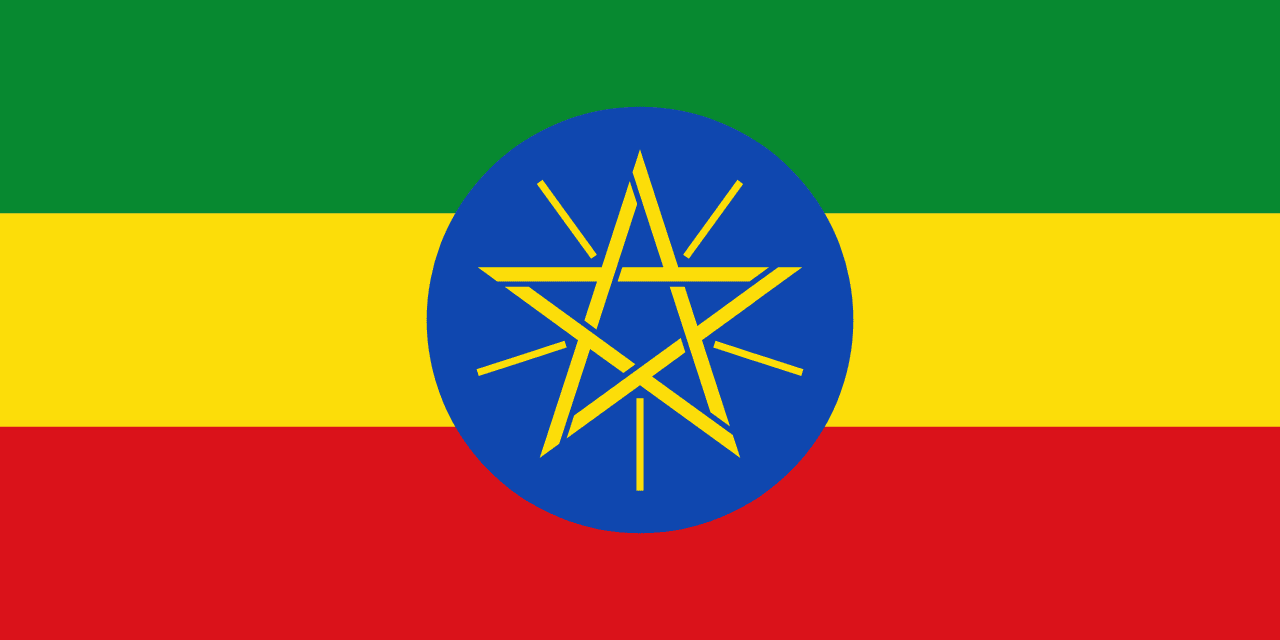
Ethiopia
Africa
Three horizontal stripes of green, yellow, and red with a blue circle containing a yellow five-pointed star in the center, representing the original Pan-African colors, the diversity and unity of Ethiopia's peoples, and the country's ancient independence.
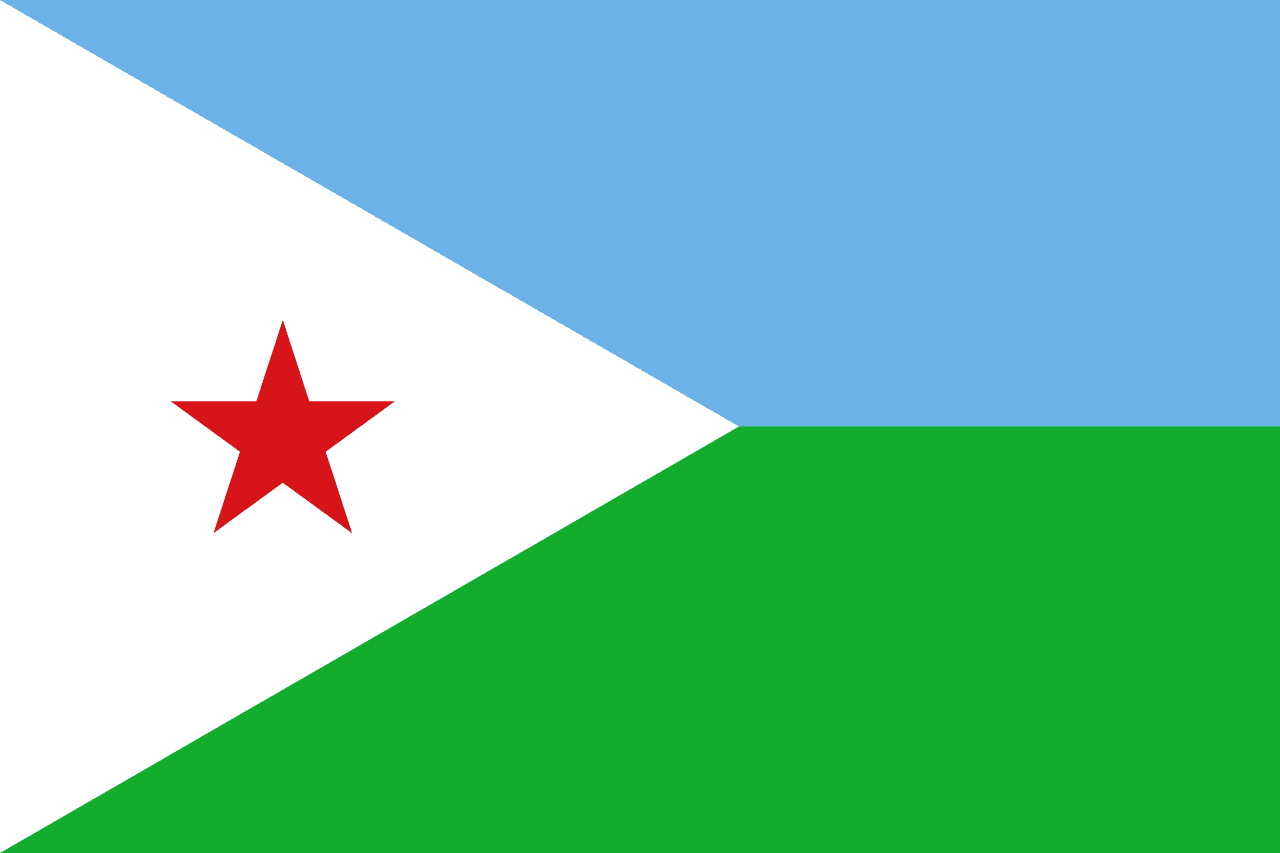
Djibouti
Africa
A light blue field with a white triangle at the hoist containing a red five-pointed star, and a green lower stripe, representing the sky and sea, the Issa people, peace, unity, and the Afar people of this strategic Horn of Africa nation.
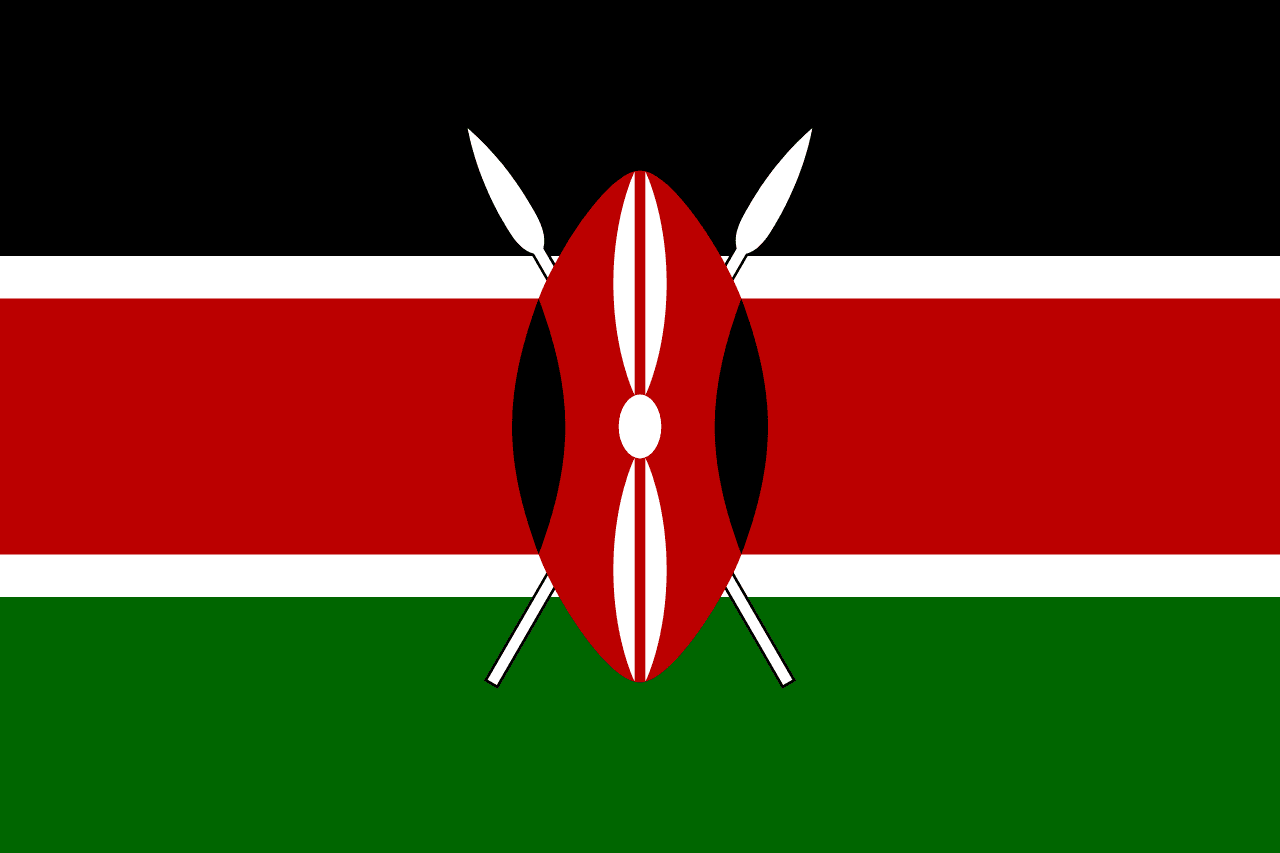
Kenya
Africa
Three horizontal stripes of black, red, and green separated by narrow white stripes, with a traditional Maasai shield and two crossed spears centered on the flag, representing Kenya's struggle for independence and the defense of freedom.
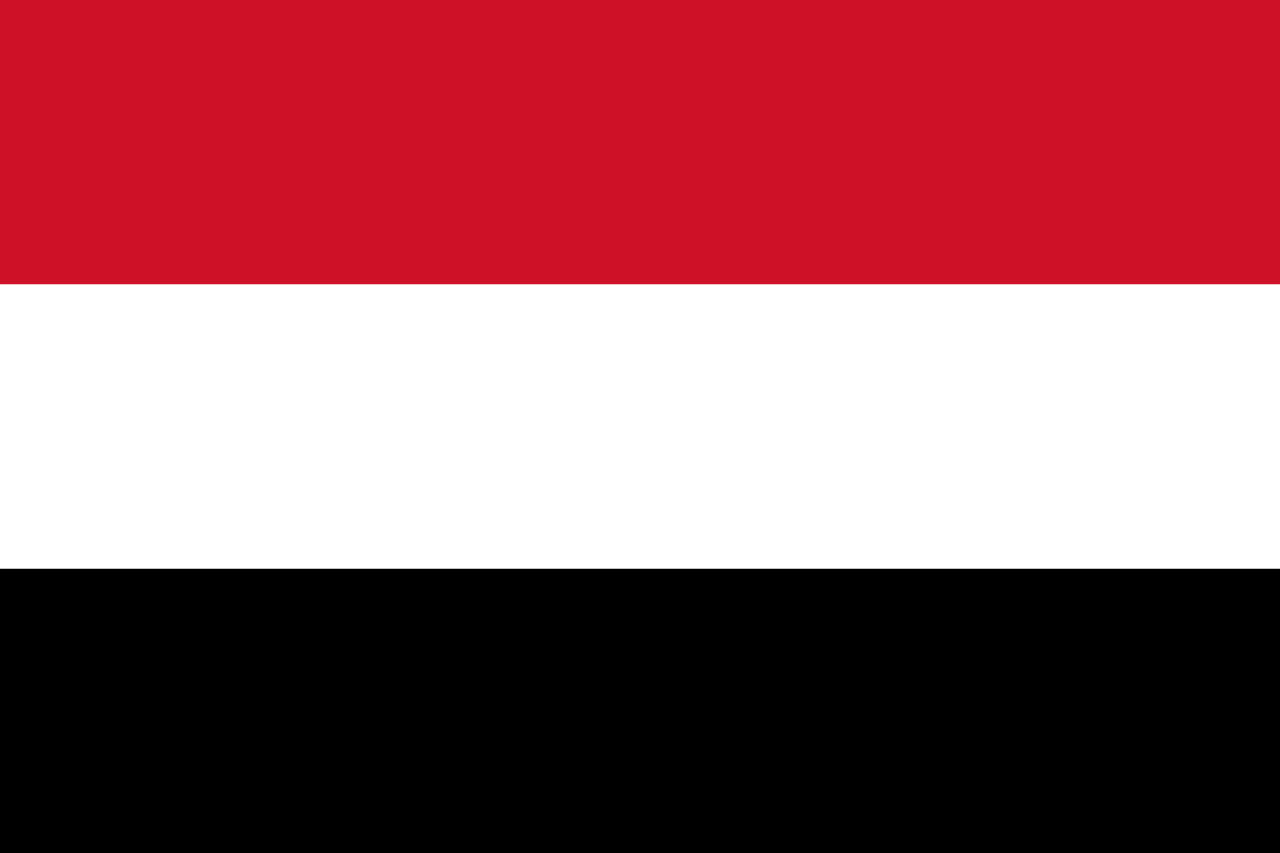
Yemen
Asia
Three horizontal stripes of red, white, and black representing the Pan-Arab colors that symbolize the bloodshed for freedom, bright future and peace, and the dark past of oppression, adopted when North and South Yemen unified into the Republic of Yemen.
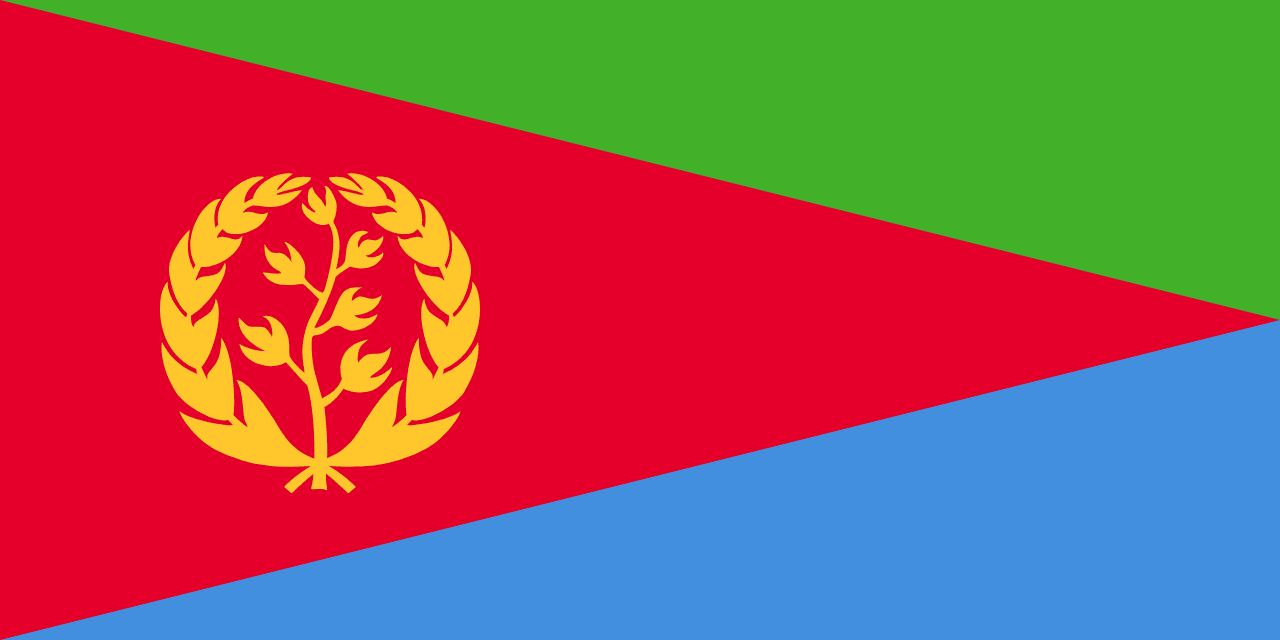
Eritrea
Africa
A red triangle at the hoist with a golden olive branch and wreath, adjacent to green and blue triangular sections, representing the struggle for independence, agricultural potential, maritime heritage, and hopes for peace.
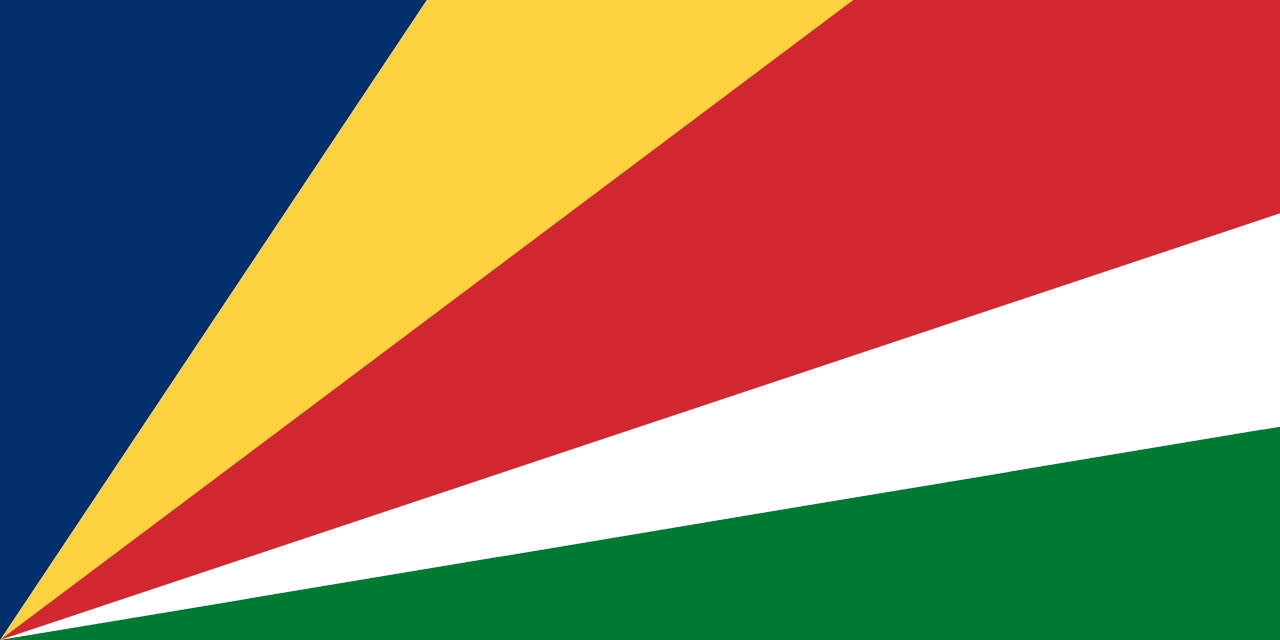
Seychelles
Africa
A flag of five oblique bands radiating from the bottom hoist corner: blue, yellow, red, white, and green. The design symbolizes a dynamic, forward-looking nation embracing unity and diversity.